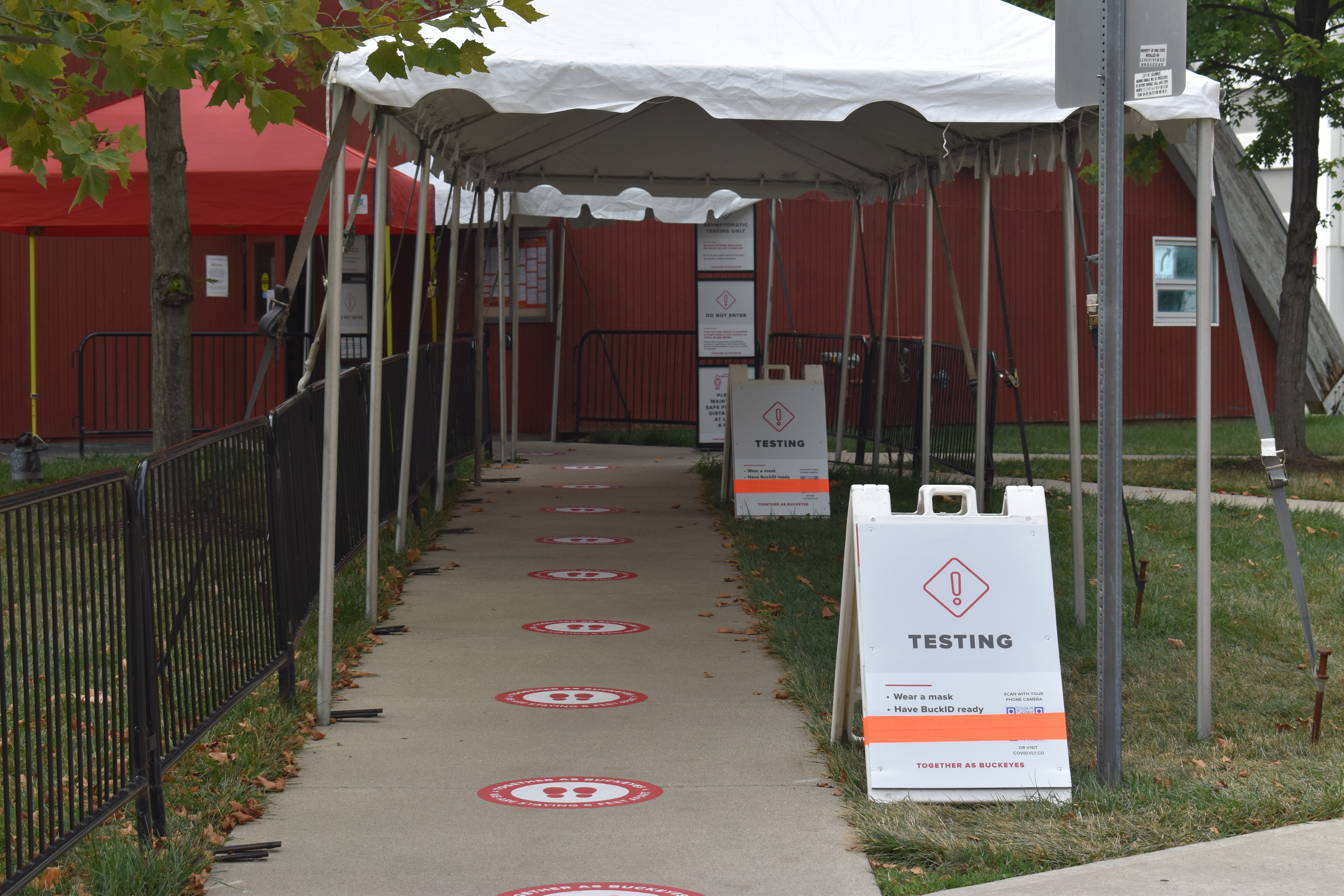
Ohio State students are returning to the campus area have a COVID-19 positivity rate of more than 3 percent. Credit: Mackenzie Shanklin | Photo Editor
The university’s seven-day average student positivity rate is 3.21 percent as of Saturday, as off-campus residents return to the University District to sequester for 10 days prior to returning to in-person activities on campus.
The university tested 5,153 students between the start of the new year and Saturday, 162 of which tested positive for COVID-19, for a 2021 student positivity average of 3.14 percent.
All Ohio State students are supposed to self-sequester for 10 days and receive two negative COVID-19 tests before returning to campus for classes. On-campus students are supposed to mail an at-home COVID-19 test prior to moving into their residence hall and receive their second test the day they arrive.
Move-in, which was delayed to allow students to sequester a full 10 days after the holidays, will occur between Jan. 18 and Jan. 24, during the second week of classes.
In-person classes are scheduled to begin Jan. 25, following two weeks of virtual instruction.
In multiple emails to the university community, University President Kristina M. Johnson said Ohio State will adhere to Gov. Mike DeWine’s guidance, along with that of state and local health experts, and use current COVID-19 case trends to determine if the plans for return to campus need to be altered.
Ohio reported 7,892 new cases of COVID-19 Tuesday, above its 21-day average of 7,410 new cases per day, according to the Ohio Department of Health website.
The start of Ohio State’s fall semester saw a student positivity rate that surpassed 6 percent at one point. COVID-19 prevalence decreased mid-semester, holding steadily at or below 1 percent for the entire month of October before seeing spikes again in November and ending the semester at 2.35.
As of Saturday, two students are still in university quarantine and isolation housing. Both students are in isolation, meaning they have tested positive for COVID-19 and chose not to isolate at their permanent residences. Quarantine housing is for those who had close contact with someone who tested positive and chose not to quarantine at their permanent residences.
Ohio State’s quarantine and isolation capacity was reduced to 329 people for winter break. That number reached more than 900 fall semester, as the university contracted with area hotels and designated Lawrence Tower, Houck House and Barrett House special COVID-19 housing.
A university spokesperson confirmed the same residence halls will be used spring semester and the same hotels will be used as needed, with the addition of the Blackwell Inn, which served as a residence hall fall semester.


